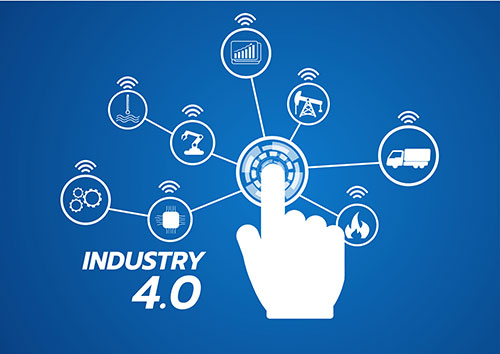With each passing year, our world becomes a little “smarter.” This change occurs with each successive iteration of Internet technology. Industry 4.0 is the latest version.
With it comes a new generation of smart machines. They look familiar, yet show an increasing ability to learn from us. Furthermore, they have the potential to automate our lives in surprising new ways.
Consider how we’ve gone from landline phones to pocket-sized communication devices. These new devices know exactly where we are and can predict where we’re about to go next. They can even suggest a route to avoid traffic.
Or consider the fact that we can prototype almost anything using additive manufacturing. The Industrial Internet of Things (IIoT) has replaced the information superhighway as the next big thing.
The terms Industry 4.0 and IIoT refer to online devices interacting with other online devices in real time. The devices learn from one another. As a result, they help us apply massive amounts of data to live better, more productive lives.
Such technology is already changing the way we live, work, and play. That’s why forward-thinking manufacturers are preparing for a new era of production. It will be one in which human workers no longer operate machines; they collaborate with them. After all, in an age of “smart” phones, “smart” homes, and “smart” cars, it’s only a matter of time before we have “smart” factories.
Welcome to the world of Smart Manufacturing and Industry 4.0.
That’s shorthand for the next wave of digitized transformation in manufacturing. This phase focuses on the disruptive potential of big data. It promises extraordinary computing power and unprecedented virtual connectivity.
The first generation of industrialization involved mechanization. Then, the second generation involved electrical automation and mass production. Afterwards, the third generation arrived with the advent of computerized digital technology. Now, with the Internet and machine learning, comes the fourth industrial revolution.
Here are a few examples of what Industry 4.0 manufacturing looks like:
Utilizing big data to streamline processes.
For instance, machines can now optimize processes in real time. This occurs instead of operating according to a set of programmed instructions. They do this by continually analyzing sensory data at many points during production.
Inter-connectivity between machines lets them use distributed computing to increase productivity. This means they can establish complex metric histories. Plus, they analyze that data at capture points. Finally, they compare data fluctuations against historical benchmarks.
Machinery automates routine QC checks and procedural adjustments. As a result, plants see improved recovery rates and reduced input costs
Digitally mapping physical entities for better design and process engineering.
Industry 4.0 technology models physical interactions between machines. This works in much the same way as 3D modeling predicts the output of a 3D printer. This lets a plant’s equipment prototype and “test run” its production environment digitally.
As a result, assets aren’t wasted. Companies can anticipate and address errors in the engineering stage rather than at the point of production. Also, product designs can be optimized against equipment capabilities.
Enhancing personnel performance through more intuitive human-machine interfaces.
Increasingly, humans and machines interact according to a collaborative model. Biometrics, voice recognition, and virtual and augmented reality technology delivers actionable information to human workers. This improves real-time decision-making, reduces human errors, and automates record-keeping.
Leaving Traditional Manufacturing Behind
Those are some monumental developments for the production process. They represent a sea change in how manufacturers may be doing business in coming decades.
It won’t be an overnight transition, of course. But for many manufacturing executives, it’s not a question of whether we’re moving in this direction, but of how quickly we’ll get there. Even so, manufacturers need to be ready, or risk being obsolete.
Navigating this emerging landscape requires courage and a little help from partners who know the terrain. But, Industry 4.0 offers big benefits for manufacturing. Ask Radley how automation technology and real-time data can help you prepare for the factory of the future.

